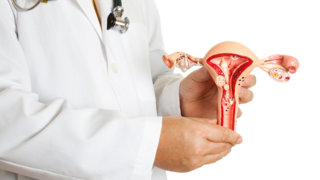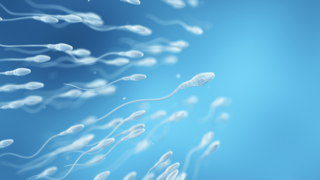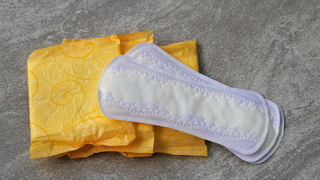In this article:
- Uterine-sparing repair (hysteropexy): The uterus is repositioned and supported using the patient’s ligaments or surgical mesh. This option preserves fertility.
- Hysterectomy with pelvic floor repair: The uterus is removed, eliminating the possibility of natural pregnancy.
- Reconstructive pelvic floor surgery: Often involves tightening or reinforcing tissues around the bladder, vagina, and rectum.
Why Pregnancy After Prolapse Surgery Needs Special Attention
Even after surgical correction, the pelvic floor remains more vulnerable than before. Pregnancy places significant strain on these tissues, and the risks differ from those of someone who has never had a prolapse.Possible concerns include:
- Recurrence of prolapse: The weight of the growing uterus can re-stretch repaired tissues.
- Cervical incompetence: Previous surgery may weaken the cervix, increasing preterm labour risk.
- Preterm birth or low birth weight: Due to pressure on the cervix and lower uterus.
- Delivery complications: Vaginal birth may not always be advised; many obstetricians recommend elective caesarean section.
- Pelvic pain or urinary incontinence: More likely in women with prior pelvic repairs.
When to Try Conceiving After Prolapse Surgery
Recovery time matters. Most gynaecologists advise waiting at least 12–18 months before attempting pregnancy after a hysteropexy or other uterine-sparing surgery. This period allows full healing of ligaments and connective tissues.Your preconception evaluation should include:
- Pelvic floor imaging (MRI or ultrasound): To check surgical integrity.
- Cervical evaluation: To detect any risk of insufficiency.
- Hormonal balance check: Especially if the surgery was performed near menopause.
- General health review: Weight, bowel health, and any connective-tissue disorders.
What Pregnancy Looks Like After Surgery
A pregnancy following prolapse repair is generally considered high-risk. That doesn’t mean unsafe. It means your care team will monitor you more closely for warning signs.You can expect:
- Frequent pelvic exams to ensure the uterus remains well-supported.
- Regular ultrasound monitoring for cervical shortening or uterine descent.
- Lifestyle adaptations such as avoiding heavy lifting, chronic constipation, or standing for long periods.
- Pelvic floor physiotherapy to strengthen the surrounding muscles during early pregnancy.
Delivery and Postpartum Planning
Because vaginal delivery may re-stretch or damage repaired tissues, caesarean section is usually preferred in women who have had pelvic reconstructive surgery. However, each case is individual. If the repair was minor and the cervix remains intact, vaginal delivery may still be possible under specialist supervision.Postpartum care is critical:
- Resume pelvic floor exercises gradually.
- Avoid constipation and excessive coughing to protect repair strength.
- Get a postnatal pelvic exam before returning to physical activity or lifting heavy loads.
Emotional and Sexual Health After Prolapse Surgery
Prolapse surgery often brings relief from discomfort and embarrassment, but recovery can also stir anxiety, especially around intimacy and fertility. You may worry whether your body can “handle” pregnancy again. These feelings are valid.Reassurance and sexual counselling can help address concerns like:
- Fear of damaging the repair during intercourse or pregnancy.
- Reduced libido due to past pain or shame.
- Anxiety about recurrence postpartum.
When Pregnancy Isn’t Advised
Your doctor may discourage pregnancy if:- The uterus was removed during surgery (hysterectomy).
- There is severe scarring or mesh erosion.
- You have chronic pelvic floor weakness or connective tissue disorders like Ehlers–Danlos syndrome.
- Future pregnancy poses a serious health risk, such as repeated prolapse or bladder dysfunction.
Pregnancy after prolapsed uterus surgery is possible, but it requires careful planning, medical monitoring, and emotional support. Healing time, surgical type, and pelvic strength all influence safety. With the right preparation and care team, many women go on to have healthy pregnancies and births after such procedures.
Whether you’re pregnant, a new mom, or navigating postpartum, you don’t have to do it alone. Join our support group to connect, share, and support one another.
FAQs on Can You Get Pregnant After Prolapsed Uterus Surgery?
- Is it safe to get pregnant after prolapse surgery?
If the uterus is preserved and healing is complete, pregnancy can be safe under close medical care. You’ll likely need more frequent monitoring and may be advised to deliver via C-section. - Can pregnancy undo the surgical repair?
There is a small but real risk of recurrence, especially if the pelvic floor is strained. Strengthening exercises and medical supervision help reduce this risk. - Will I be able to conceive naturally?
Yes, if the uterus, fallopian tubes, and ovaries are intact. However, scar tissue or changes in pelvic anatomy may sometimes make conception harder. - Can I have a vaginal delivery after prolapse repair?
Usually, a caesarean section is recommended to protect the surgical site, but decisions are made individually based on your surgeon’s advice.











